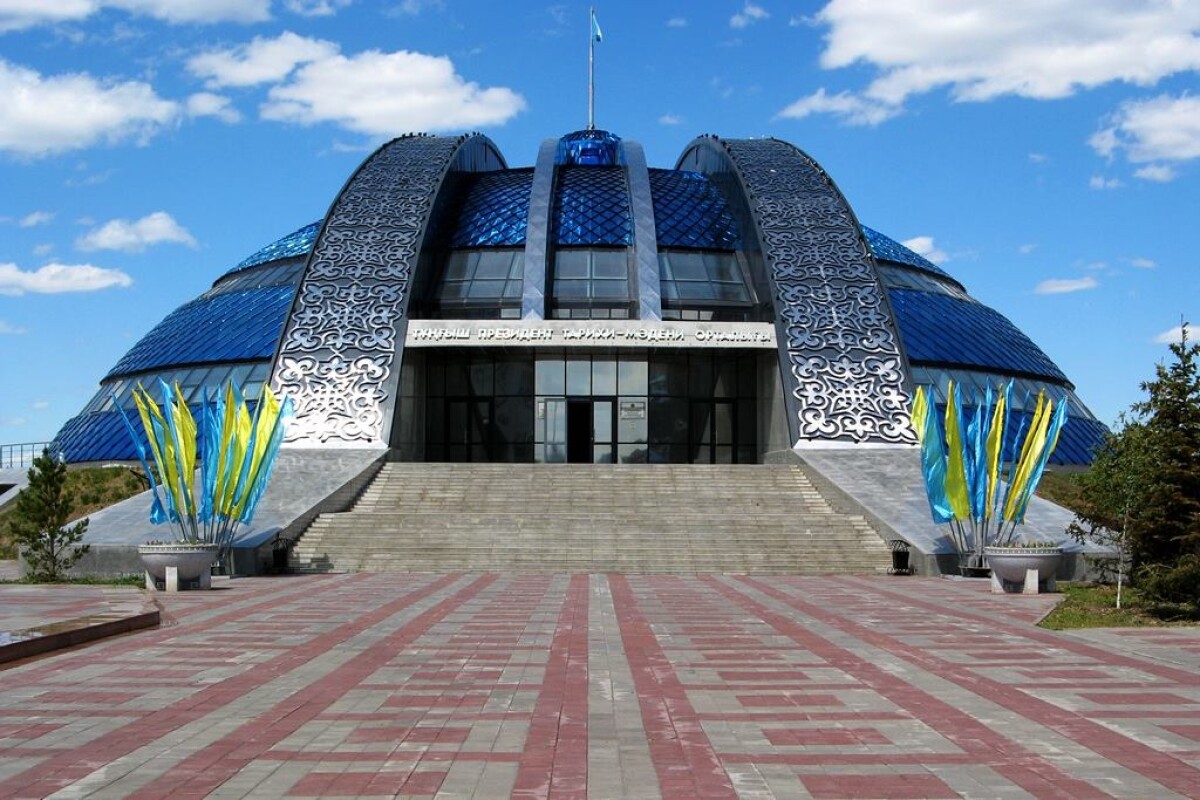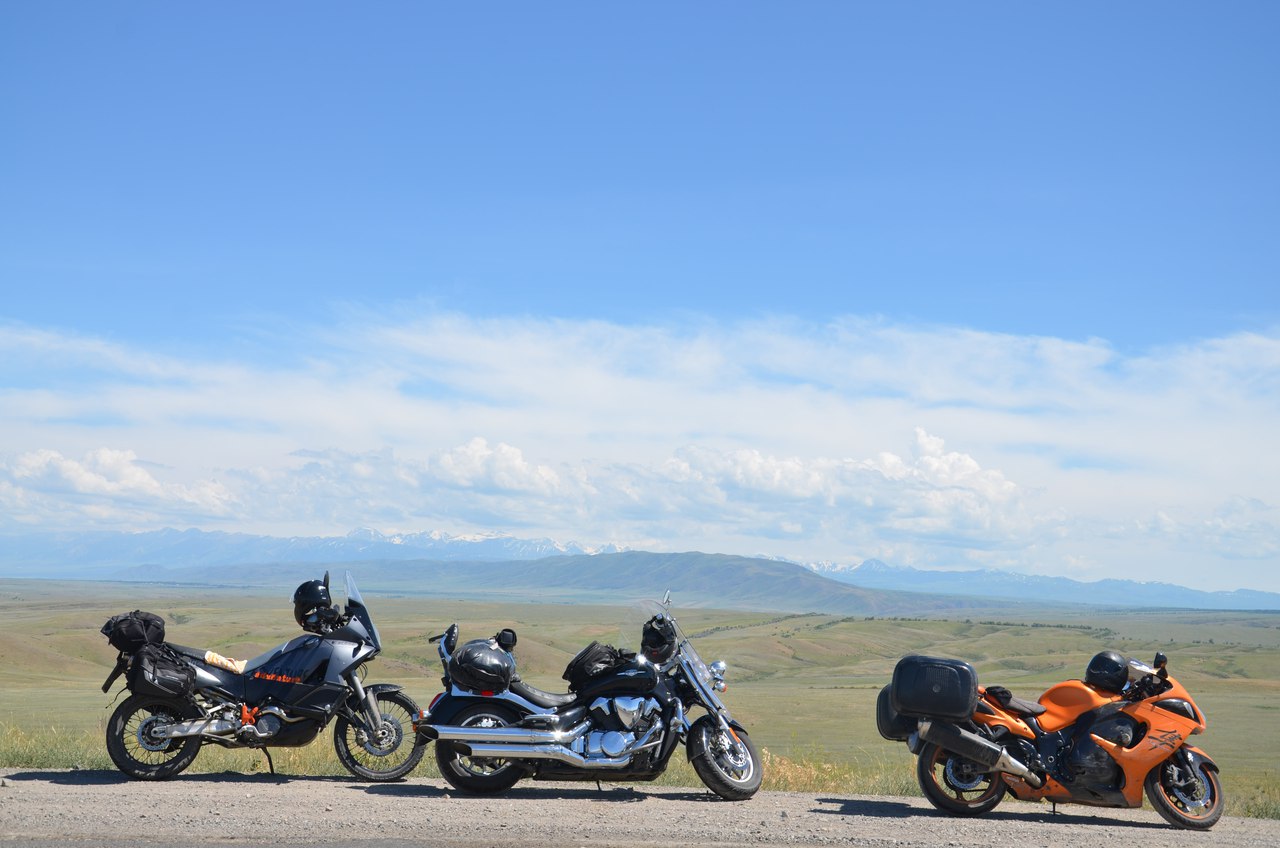
The historical and cultural center of the First President was opened on November 22, 2011 in the city of Temirtau with the participation of the Head of State, a Leader of the nation Nursultan Nazarbayev. The purpose of the historical and cultural center is the disclosure, through the prism of the biography of the First President of the Republic of Kazakhstan, of the formation of Independent Kazakhstan, as well as the development of the giant of heavy industry - Kazakhstan's Magnitogorsk.
Being a valuable cultural object, the Center realizes the state policy in the sphere of culture, museum business, implements creation and display of the museum image of the history of the Republic of Kazakhstan. And also takes part in the implementation of state policy in the field of education and science by providing traditional library services and priority implementation of information and communication technologies. The Center organizes theatrical and stage, concert events aimed at the formation of spirituality, national identity, education of patriotism, moral and ethic qualities of Kazakhstanis, as well as popularizing the achievements of national and world culture and art.
.jpg)
The center consists of 6 exposition halls:
1) Independent Kazakhstan
The exposition hall gives an opportunity to show all the achievements of Kazakhstan from the moment of the formation of the Independent Republic. In the center of the hall there is a mock-up of Astana - the capital of Kazakhstan, executed on a scale of 1: 1000. The layout presents all the legendary architectural objects that form the face of the Kazakh capital - Ak Orda, the Palace of Peace and Harmony, Baiterek, the memorial complex "Kazakh Eli", "Khan Shatyr", the Palace of Creativity "Shabyt", Independence Square, the Khazret Sultan Mosque and many others. On the central wall of the hall there is a monumental painting. The first half of the painting is devoted to the working biography of the Head of State, connected with Kazakhstan's Magnitogorsk. And the second part is devoted to modern Kazakhstan, to a peaceful, strong and prosperous state.
In the windows are the most important attributes of the statehood of the Republic of Kazakhstan – national Flag, Coat of Arms and Anthem; national currency - tenge of the first issue; unique photographs depicting the events of the newest history of Kazakhstan.
2) Son of his time
In the center of the hall there is a diorama "Ushkonyr", which recreates the places where the President spent his childhood. Beautiful steppe landscape is recreated based on the film "The sky of my childhood." The family tree of the Shapyrashty family - Nursultan Nazarbayev's ancestors, objects of the Kazakh people's everyday life, mock-ups of an apartment house in the village of Chemolgan, where the future president lived with his parents, and the technical school number 8 in Dneprodzerzhinsk, where he received professional education, are represented in the windows.
Also visitors can get acquainted with the photos, telling about school and student's years of Nazarbayev, school certificates and a direction for work in building management of Domenstroy. In the hall there is also a red arch with the inscription "Here is built the Kazakhstan Magnitogorsk - the shock construction of the country". Such arches stood at all entrances to the city of Temirtau in the 50-60's of the XX century.

3) Personality Phenomenon
"The history of Magnitogorsk, the history of Temirtau, the fate of people is inseparable from my fate. If there were no Magnitogorsk and Temirtau in my life, I would never become President," Nursultan Abishevich said during his visit to Temirtau. Photos in the windows show the construction of the largest metallurgical plant. In the hall there is an advertising column with posters, magazines and newspapers of the 50's of the last century. In 1962, Nursultan Abishevich created a family. In the electronic framework, photos of the young Nazarbayev family are represented, in the days of studentship, with colleagues in work and study. The screen shows a video chronicle about the construction of Kazakhstan's Magnitogorsk and the formation of ferrous metallurgy in Kazakhstan.
July 3, 1960, the blast furnace of the metallurgical plant issued the first Kazakhstani pig iron. This date becomes the birthday of the Karaganda Metallurgical Combine. The first ingot of Kazakhstani pig iron, an emergency edition of the newspaper "Leninskaya Smena", which tells about a significant event, is presented in the window. Also visitors can see the blast-furnace man’s working clothes - it is made of thick cloth and is sewn with reinforced threads.
4) Steel profile of Kazakhstan
The hall reproduces the atmosphere of metallurgical production and gives visitors the opportunity to be inside the enterprise. In the center of the hall, on the right side, there is a mock-up of the metallurgical plant, where all the major redistributions are presented. Agglomeration and coke-chemical production are the initial stages; here, the processing of iron ore raw materials and coking of coal takes place, then the agglomerate and coke are loaded into a blast furnace where, under the influence of high temperatures, iron forms in the course of chemical reactions. To obtain steel, scrap and liquid iron are charged to the converter. Oxygen purge promotes carbon burn-up. The result is steel. Liquid steel is fed into the crystallizer of a continuous casting machine, where slabs are produced, which then are rolled in sheet rolling shops to a predetermined thickness. In the center of the hall, on the left side, there are models of slabs and finished rolled products, then - a sample of working clothes of the worker of JSC "ArcelorMittal Temirtau".
.jpg)
5) In the stream of time
Photos and documents characterizing the active political activity of the future President are presented in the windows. Photos and documents reveal the history of the development of the Karaganda metallurgical combine and the city of Temirtau in the period 1972-1977. In the exhibition stands there are documents relating to different periods of Nursultan Nazarbayev's activity. They were prepared by the Center's researchers on the results of research and exploration work in the archives of Temirtau, Karaganda and Almaty. In the hall there are models of the Palace of Culture and Technology of Metallurgists; factory-technical school; swimming pool "Dolphin" (now - "Zhastar"); monument to Samarkand warriors who died during the Great Patriotic War. On the information panels visitors of the Center can trace the chronology of certain political events.
6) The way of Kazakhstan
In the center of the hall there is a bas-relief depicting the history of Kazakhstan - from the first rock paintings to our days. The center of the artistic composition is a fragment of the sculptural ensemble "Kazakh Eli", symbolizing the desire of the people of Kazakhstan for further development and prosperity. 25 years is a brief moment, but for a young state this is the age of majority. The period of independence is rich in cardinal changes and events. For a quarter of a century of independence, the face of the country has changed. To get acquainted with successes and achievements, visitors of the Center will be able to use the interactive map.
Each year opens a series of important events, presenting the annals of independence. On interactive panels visitors can get acquainted with information on the most significant dates in the political, economic and socio-cultural life of sovereign Kazakhstan.
Translated by Raushan MAKHMETZHANOVA
